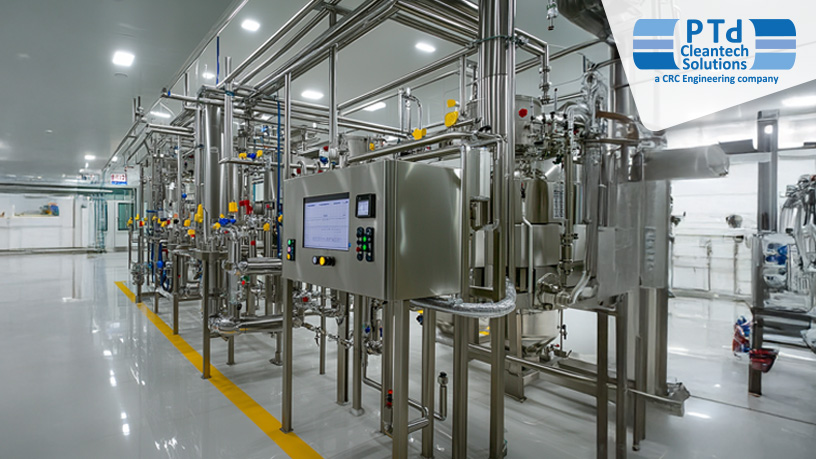Clean utility design is a critical component in making pharmaceutical manufacturing plants compliant with rigorous Good Manufacturing Practice (GMP) standards. Under conditions where product safety and process reliability are paramount, particularly in the manufacture of drugs, the design of clean utilities will have direct implications on compliance. From clean steam and water systems to gases and HVAC infrastructure, all aspects need to be carefully considered to fulfil both the efficiency of operation and regulatory needs. This blog delves into how clean utility design plays a critical role in GMP compliance, specifically in the context of its place in ATMP design.
1. The Role of Clean Utilities in GMP Environments
Clean utilities are not merely supporting systems in GMP-controlled environments; they are part of product quality and safety. They consist of systems providing purified water, water for injection, clean steam, compressed air, and other process gases. A dysfunctional clean utility system due to poor design can introduce contamination risks, variable outputs, and system failure, all of which put GMP compliance at risk.
Good design starts with a detailed risk assessment that defines critical control points where contamination can take place. Materials for piping and valves, utility routing to reduce dead legs, and sanitisation or sterilisation capabilities are all considerations. These aspects of design benefit not just process performance but also traceability and ease of validation activities, the key to GMP.
Integrating these principles within ATMP design is particularly critical given the sensitive nature of manufacturing. Such products are generally required to be developed under aseptic conditions, and a single lapse from clean utility integrity can invalidate the whole batch of the product. Hence, integrating clean utility systems with GMP requirements right at the initial stages of ATMP design is not merely a good practice; it is one of the regulatory requirements.
2. How Clean Utility Design Supports Regulatory Compliance
Regulatory authorities like the MHRA and EMA demand from clean utility systems control, consistency, and reliability. During audits, inspectors look not only at documentation but also at the physical layout and functioning of systems. This encompasses the position of sampling points and automated monitoring systems.
A clean utility design that is optimised provides systems which are simple to validate and monitor. For instance, real-time data recording and segregation between clean and non-clean areas all help create regulatory confidence. These systems should be capable of offering verifiable evidence that they satisfy the performance specification under all normal operating conditions.
When used in ATMP design, clean utility systems also need to accommodate small batch manufacturing and quick changeovers. Since the products are made in controlled, small batches, their utility systems need to be easily convertible without undermining GMP levels. Scalability and flexibility become fundamental aspects of clean utility design for such plants.
3. Integrating Clean Utility Design in ATMP Facilities
The incorporation of clean utility systems during ATMP design has to be integrated, incorporating process engineers and quality assurance groups at the beginning. This concerted effort ensures that utilities are not afterthoughts but an integral part of the manufacturing strategy.
Clean utility systems for plants need to serve both immediate needs and future growth. For example, a plant planned today may require more production lines or meet changing regulatory requirements tomorrow. Therefore, utility systems need to be modular and permit upgrades with minimal downtime. The complexity of production requires utilities to retain integrity under diverse operating conditions. This also involves temperature and production load fluctuations. A strong design ensures GMP compliance remains constant despite operational difficulties.
In the end, an ATMP design incorporating clean utility systems from the outset builds a culture of compliance and quality. It facilitates efficient validation, easier inspections, and increased operational robustness.
Major Takeaways
Clean utility design is so much more than a technical necessity; clean utility design is a foundation of GMP compliance. In production plants, where product efficacy and safety are top priorities, incorporating strong utility systems early on is vital. By tying utility design to GMP principles, manufacturers can enable regulatory success and provide consistent delivery of safe, high-quality therapies. As the field continues to advance, ATMP design prioritising clean utilities will continue to be a necessity for long-term compliance and innovation.

